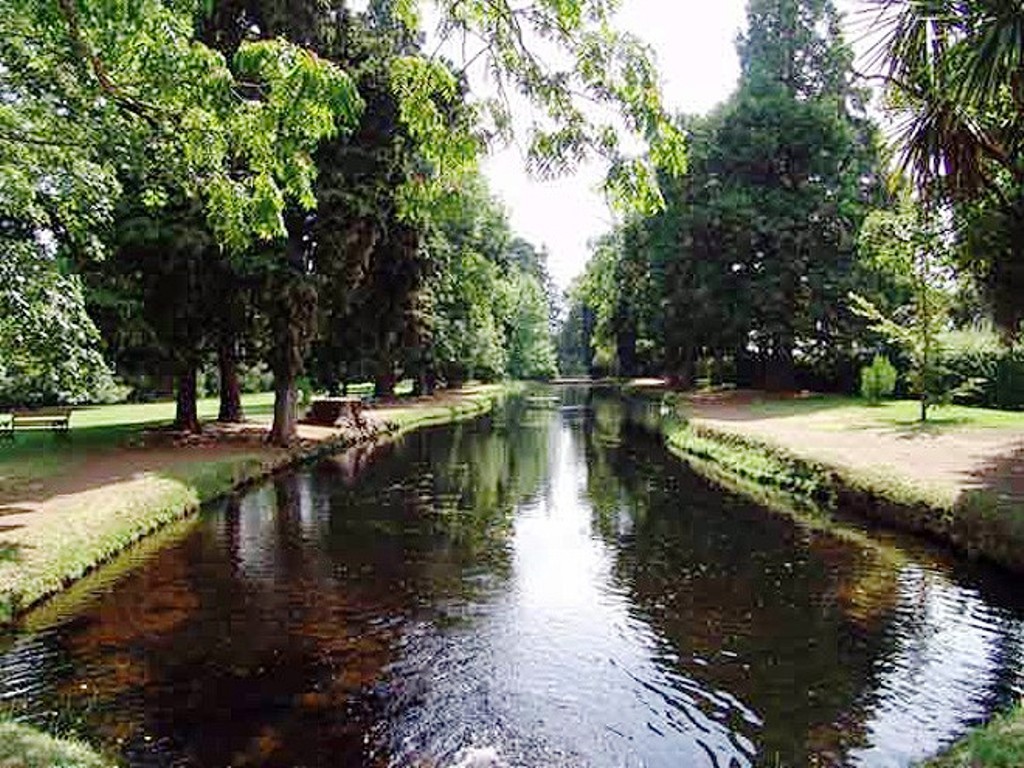Tasmanian salmon ponds
by Carl Hyland on 2 Jan 2012

Salmon Ponds Carl Hyland
The Salmon Ponds, circa 1861, is the oldest trout hatchery in the Southern Hemisphere. It was the birthplace of trout in Australia and the origin of Tasmania’s legendary trout fishery.
Take a walk back in time amidst the historic buildings, hatchery and fish ponds – all set within the original 19th century English style public open space of superb trees, hedges and lawns.
The early settlers to Tasmania realised that their new home – with its cool climate and abundant lakes and rivers – was ideally suited to the fish from their homeland. In 1861, six Salmon Commissioners were appointed to oversee the acclimatisation of Atlantic salmon (Salmo salar) into Tasmania. The Salmon Commission built the Salmon Ponds hatchery on the Plenty River, a tributary of the Derwent River, to receive salmon eggs sent from England.
After a number of failed attempts to transport live eggs, the first successful shipment arrived at the Ponds in May 1864. The eggs had been carefully packed between layers of moss, crushed ice and charcoal in small perforated boxes and shipped aboard the Norfolk. A small number of brown trout eggs were included, and were hatched and raised alongside the salmon. Unlike salmon, however, which are a migratory fish and did not establish in Tasmania, the trout formed sustainable populations and quickly spread throughout the State's lakes and rivers.
These fish are the ancestors of today's ‘wily brown trout’ and formed the foundation of Tasmania's renowned wild trout fishery. Brown trout ova from the Ponds were later used to establish hatcheries throughout Australia and New Zealand. Today, the Salmon Ponds continues to be operated as a hatchery by the IFS to supply the brook, rainbow and brown trout stocks for Tasmania's recreational fishery. Eggs collected from wild trout, are hatched and raised until the fish are between the size of a match (called fry) and a finger (fingerlings). These fish are then released into lakes and dams around Tasmania, continuing to boost natural stocks for the recreational fishery.
The Salmon Ponds was originally designed as a display hatchery and it has remained open to the public. Set amidst mature European trees, the historic buildings and ponds, Angling Museum and Anglers Hall of Fame, are a worthy attraction for Tasmanian families, tourists and angling enthusiasts.
http://www.salmonponds.com.au/index.html
The Fish: Fish include in the ponds include Rainbow, Brown, Brook, Tiger and Albino Trout and Atlantic Salmon. They can weigh up to eight kilograms.
Brown Trout: The Brown Trout was introduced to Tasmania from Europe in 1864 and is now in good numbers in most lakes and rivers, all of which have self-sustaining populations. The largest recorded Brown Trout was a 13.27kg monster, caught in the Huon River in 1887. Brown Trout vary considerably in colour depending on whether they are found in rivers, lakes or sea-run.
Rainbow Trout: Rainbow Trout are considered by many anglers to be the best sporting fish in Tasmania, but have not adapted in the wild as well as the Brown Trout. Introduced from North America in 1898. The Tasmanian record Rainbow Trout is 7.8kg caught in the Ouse River in 1933. Usually have a dark olive green back and silvery white ventral surface, with a pink to red flash along the side.
Brook Trout: A very attractive trout with dark olive-green to brown back, sides and dorsal fin with light worm-like markings and a white stripe along the leading edge of fins. Although introduced to Tasmania in 1883, it hasn’t acclimatised well - Clarence Lagoon and Lake Plimsoll have wild populations with specimens up to 4kg.
Atlantic Salmon: Atlantic Salmon in sea-cage farms are the backbone of Tasmania’s aquaculture industry, and some large mature fish can be seen and fed at the Salmon Ponds. Unsuccessful attempts were made to introduce them to Tasmania’s lakes and rivers. Once a year, two lakes have been stocked with large fish, and many are caught in Southern waterways following their escape from farms.
Albino Rainbow Trout: These golden coloured albino rainbow trout are rare in the wild, but our pond has some fine species. They are popular with visitors because they are easily seen in the pond.
Tiger Trout: Produced from crossing female brown trout (eggs) with male brook trout (milt). Bred as a display fish and novelty species at the Salmon Ponds Hatchery. Occasionally released into a few waters, eg. the Pet Dam, Lake Dulverton and Pawleena Lagoon. A sterile hybrid so therefore does not breed. Green mottled back with distinctive tiger like bands. Otherwise similar in shape and features to brown trout.
The Salmon Ponds, Heritage Hatchery and Gardens, is open daily. Phone (03) 6261 5663 for more information.
If you want to link to this article then please use this URL: www.sail-world.com/92458